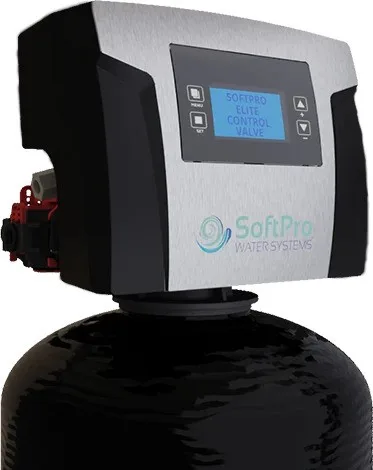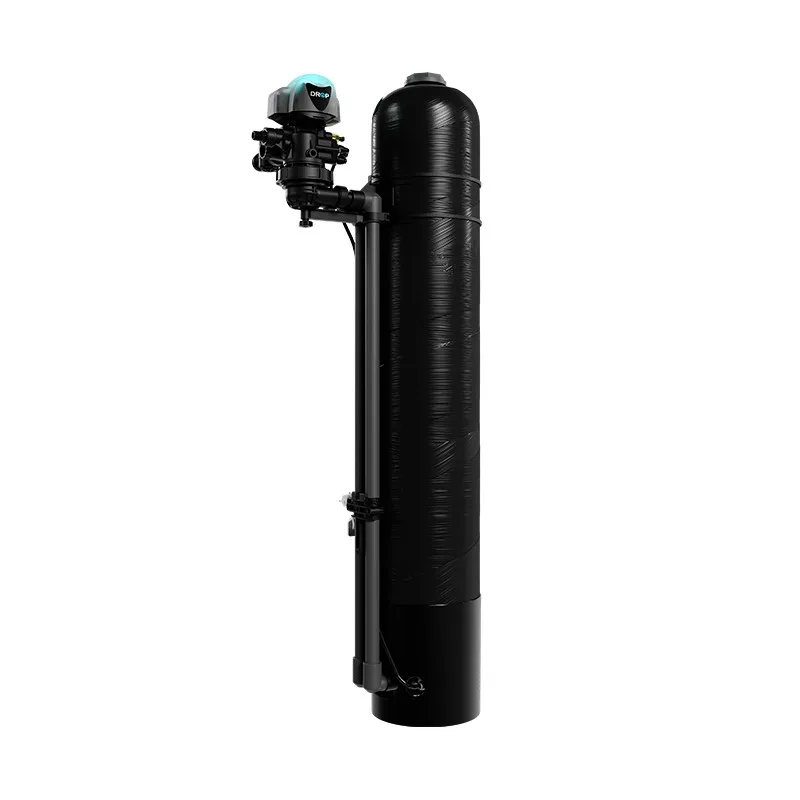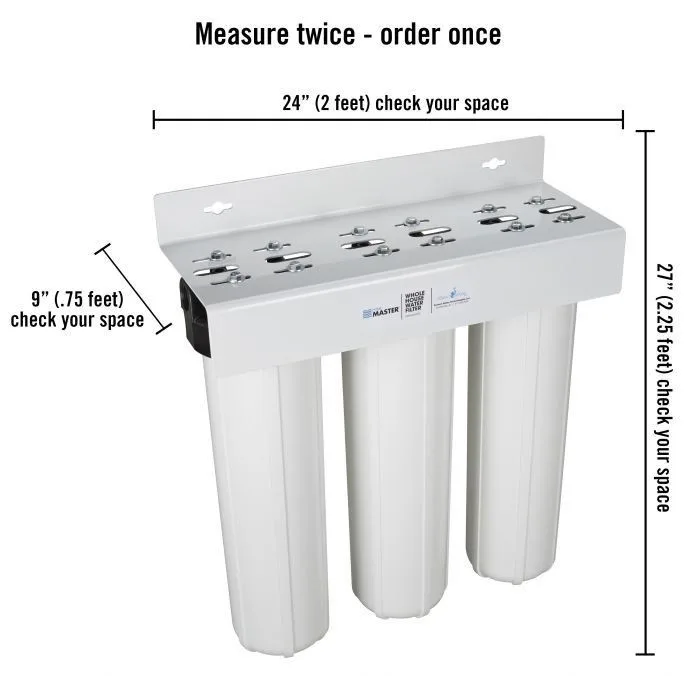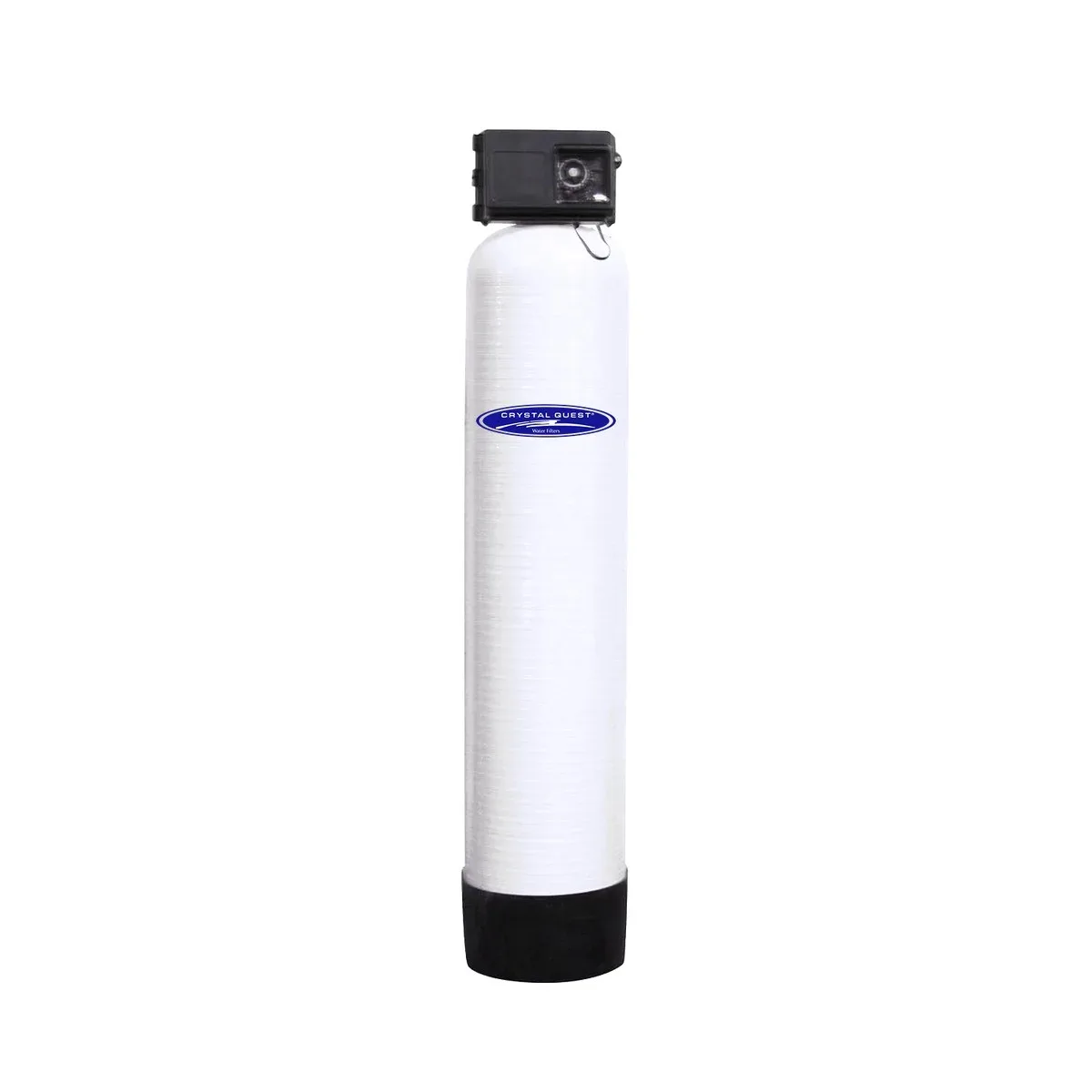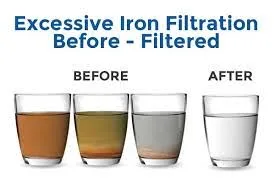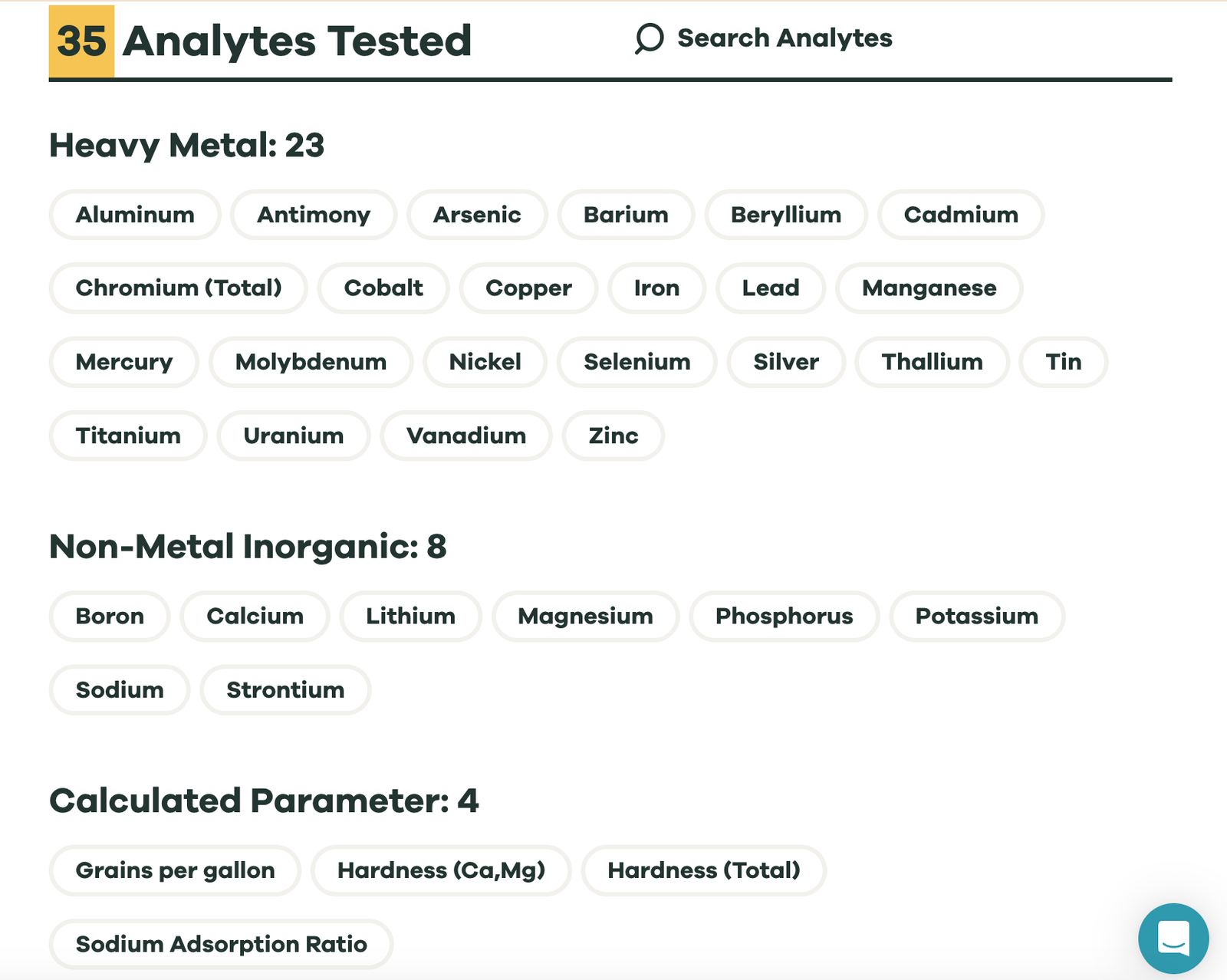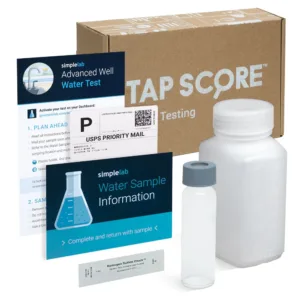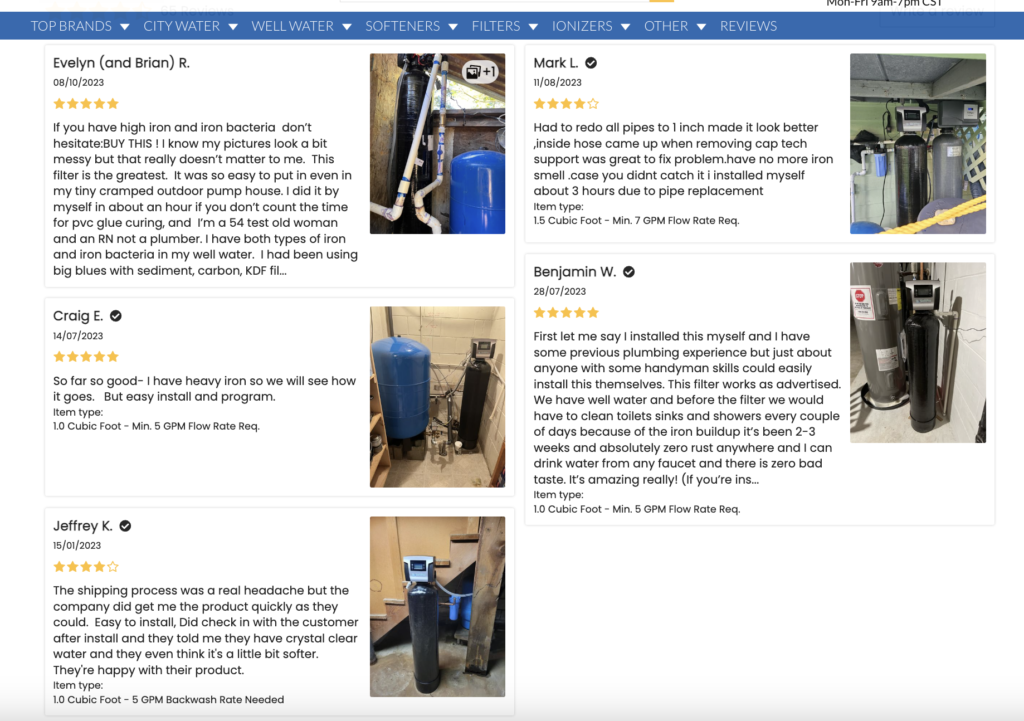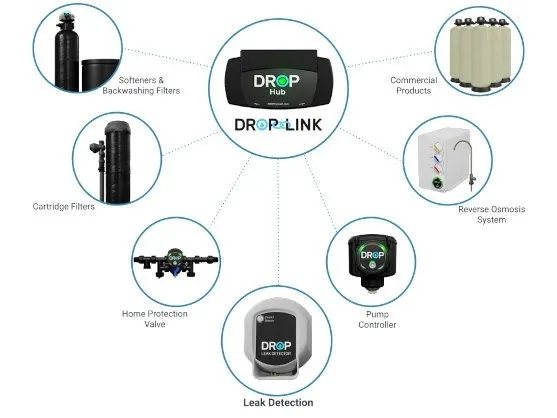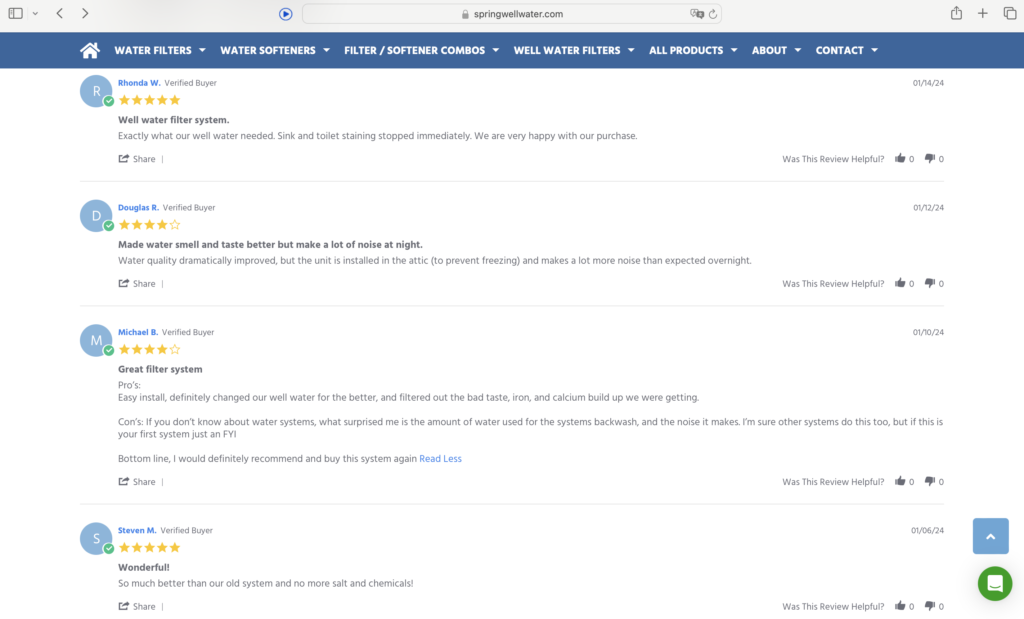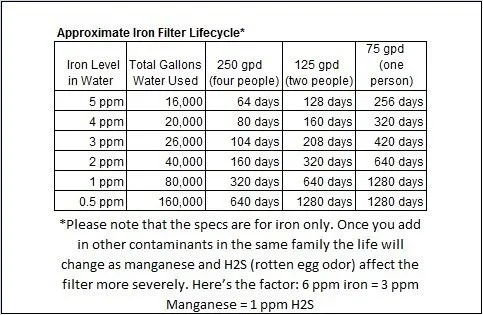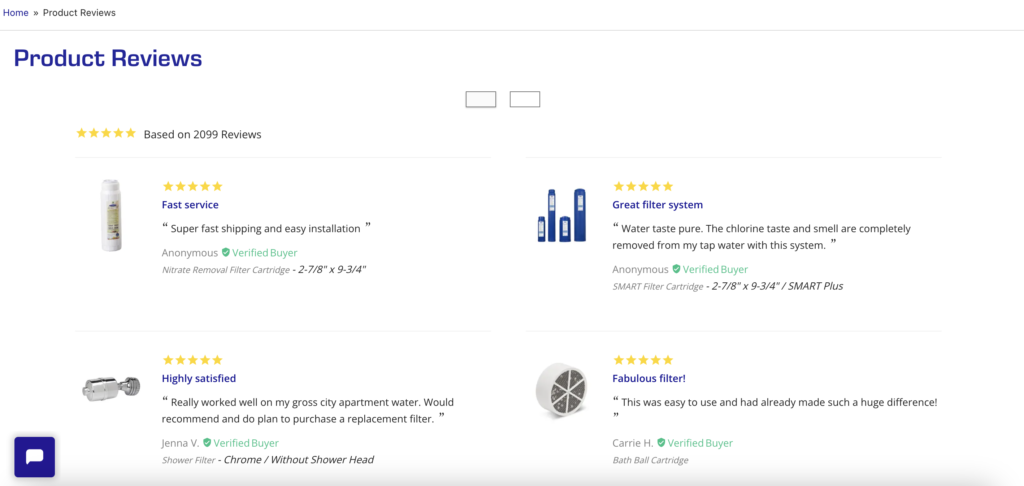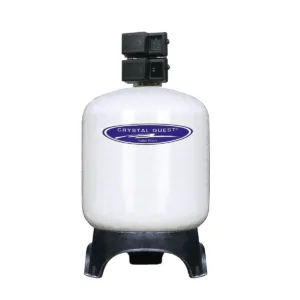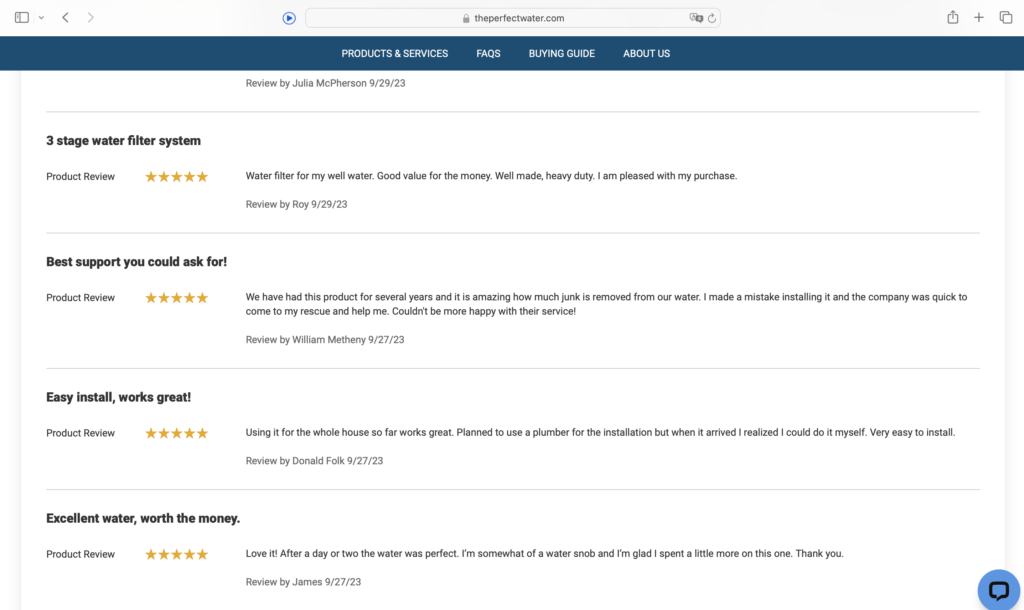- Home
- Health
- Water Softener Guide
- Water Treatment
Private Sewers & Septic Systems
- About Private Sewers Sysytem And Septic Systems
- Lateral Root Notification Program
- Fats, Oil & Grease
- Spills & Black Water Valves
- Help Protect The Enviroment
- Septic Systems
- About
Best Water Softener For Iron Removal

Hey everybody, Welcome to our detailed guide on finding the Best Water Softener For Iron Removal!
I began a comprehensive study to understand the best Water Softeners For Iron Removal.
After investing countless hours into research, testing, and analyzing customer feedback.
From scrutinizing the most minor components to comparing dozens of models side-by-side, my review process was anything but superficial. To bring you the best, I evaluated dozens of water filtration solutions for iron and rust removal.
I looked at their efficiency, durability, and how well they remove iron from water, ensuring you get insights that are both broad in scope and meticulous in detail.
I’ve done the legwork to save you not just money, but also time and the hassle of guesswork. There are lots of solutions on the market, but not every solution is fit for purpose for your needs.
My focus is to ensure you invest in a water filtration solution gives you years of payback.
At the end, my goal is to help you feel reassured knowing that you are serving your family water that is as clear, clean, and safe as it is refreshing. Take pride in a well-maintained home, where appliances operate flawlessly and plumbing systems remain robust, all thanks to the absence of detrimental iron and rust buildup.
Table of Contents
Best Water Softeners For Iron Removal
1
Best pick for Iron between 8 and 30 PPM
SoftPro Iron Master AIO Well Water Iron Filter
- Iron Removal: Iron 30 PPM Ferrous + Ferric
- Process: Air Injection Oxidation + Katalox
- Warranty: Lifetime
- Money-back Guarantee: 6-month
- Filtration capacity: Katalox usually lasts between 5 and 10 years
9.9
4.9/5
2
Best pick for Iron up to 10 PPM
DROP Single Tank Aeration Filter
- Iron Removal: Iron up to 10 PPM Iron
- Process: Air Injection Oxidation
- Warranty: Lifetime
- Money-back Guarantee: 6-month
9.8
4.8/5
3
Best pick for Iron between 4 and 7 PPM
SpringWell WS1 Whole House Well Water Filter System
- Iron Removal: Iron up to 7 PPM Ferrous + Ferric
- Process: Air Injection Oxidation
- Warranty: Lifetime
- Money-back Guarantee: 6-month
9.8
4.8/5
4
Best pick for Iron up to 3 PPM
Home Master (HMF3SdgFeC) 3-Stage Whole House Water Filter Review
- Targets: Iron up to 3 PPM
- Process: 3-Stage Filtration
- Capacity: 100,000 Gallons, Up to 15 GPM
- Warranty: 2-Year
9.8
4.8/5
5
Best Pick for High Flow Rates and Commercial Use
Cyrstal Quest Metal Removal Water Filtration System
- Versatility: Wide Flow Rate Options (15 GPM to 205 GPM)
- Control: Adjustable Backwash Cycles with Optional Advanced Controllers
- Durability: Heavy-duty Composite Fiberglass Tanks
- Target Contamination Reduction: 85% or more.
9.8
4.8/5
4 Common Reasons Why People Want To Remove Iron From Water?
1. Health and Safety: Ensuring Well-being
- Reducing Health Risks: Protecting against excessive iron, crucial for those with specific health conditions.
- Improving Drinking Water Quality: Enhancing the safety and taste of your water, making it more suitable for drinking and cooking.
2. Home Maintenance and Longevity: Protecting Your Investment
- Protecting Plumbing Systems: Preventing iron-induced blockages and wear, thereby prolonging the life of your plumbing.
- Preserving Appliances and Fixtures: Avoiding the staining and damage caused by iron, maintaining the integrity and appearance of your household items.
3. Aesthetic and Sensory Quality: Enhancing Daily Experience
- Enhancing Taste and Odor: Removing the metallic taste and unpleasant odors caused by high iron levels, for a better culinary experience.
- Preventing Staining and Damage: Keeping surfaces clean and stain-free, preserving the aesthetic appeal of your home.
4. Economic and Environmental Efficiency: Saving in the Long Run
- Reducing Maintenance and Cleaning Efforts: Cutting down the time and effort spent on cleaning iron stains and sediment.
- Offering Long-term Cost Savings: Diminishing the need for bottled water and costly cleaning products, while extending the lifespan of appliances.
- Promoting Environmental Sustainability: Reducing your environmental footprint by minimizing the use of bottled water and harsh cleaning agents.
Whether it’s for health, home maintenance, aesthetic quality, or economic and environmental reasons, your decision to invest in a water solution with an iron filter is bound to bring about a positive change in your daily life and household management.
Iron in Water: Understanding Its Sources, Impacts, and Management
The degree of iron in water across the U.S varies significantly however certain soils and rocks are notably rich in iron minerals. This natural occurrence leads to iron dissolution into groundwater as rainfall or snowmelt permeates through these iron-bearing layers.
Additionally, iron contamination can also stem from the corrosion of iron or steel structures within wells or water pipelines, mirroring the process of a metal pail rusting when exposed to moisture and air. This dissolved iron often leaves behind unsightly rust stains on household plumbing and laundry.
While iron presence in water is generally not a health hazard—considering the human body’s need for iron to facilitate oxygen transport in the bloodstream—it primarily garners nutritional iron through food, as waterborne iron is not readily absorbed.
However, the presence of iron in water supplies, especially in wells, warrants attention due to its potential role in fostering the growth of harmful bacteria. Certain bacteria thrive on iron, making it challenging to eradicate them from water sources already rich in this mineral.
Consequently, in areas like Minnesota, where high iron levels are prevalent, monitoring and managing iron levels in water is essential (Minnesota Department of Health, 2023) not only for aesthetic and maintenance reasons but also for ensuring water safety.
Types of Iron Found In Water
Hey everybody, Today, we’re going to talk about iron and how to get it out of your water supply. Iron is the most abundant mineral in the earth’s crust. Iron is everywhere. And for you well owners, you folks typically have iron in your water, and it can be a nuisance.
There are three types of iron found in water:
- Ferric Iron: Ferric Iron colors water reddish-orange. It’s easily spotted and removed, as it solidifies and oxidizes, making filtration effective.
- Ferrous Iron: Invisible in water, Ferrous Iron’s presence is noted by its effects. Low levels are treatable with ion-exchange, while high levels require oxidation and filtration.
- Bacterial Iron: Iron Bacteria consume ferrous Iron, leaving slimy residue. Eliminating Iron usually solves the issue, but severe cases may need chlorine treatment for complete eradication.
It comes in a soluble state, meaning that it’s dissolved and it’s in solution. If you pour a glass of water with dissolved iron, that water is crystal clear. When it oxidizes, it becomes ferric iron. Now it’s a solid. It’s actually a filterable particulate.
The third most common form of iron we see is bacterial iron, and that’s when bacteria bonds with iron in the well and it creates this nasty, slimy stuff that is very hard to get out.
How Much of a Problem is Iron in Your Water?
Iron is a nuisance and if you have as little as 0.3 part per million in your water, you know it because:
- it’s staining toilets and fixtures
- It’s creating havoc in your laundry, turning your clothes orange
- if ignored, can lead to a breakdown of household appliances
- It can even play havoc with your entire plumbing system
- if concentrations are high enough, it could have harmful effects on your health.
So most people that have iron in their water, they want it out of the water.
One of the reasons it’s such a nuisance, it doesn’t take very much at all. In fact, as little as 0.3 part per million, it’ll cause these stains. Well, let me put that in perspective. If you had a million beach balls and only one-third of one beach ball was iron, that would be enough to stain the fixtures in your house, so it doesn’t take much iron at all to cause problems.
How Can You Identify and Test for Different Types of Iron?
Sometimes the iron can be in both forms. It can be both ferric and ferrous. So, if the water has a tint to it, that means that some of that iron is already out of solution in the ferric form. That’s filterable. We can put a sediment filter and probably capture that, but we also want to know if there’s ferrous iron still in the solution.
And in order to find that out, we have to do a simple test. Iron tests are available either in test strips or in chemical titration-type home tests that you can do yourself. But it’s very important to understand that level of iron. Because if it’s in solution, we have to do something to turn it into a ferric form or capture it in its ferrous state.
We usually send all our test to My Tap Score and the Well Test would be most recommended test to get a holistic application, if you are getting your water supply from a private well. Otherwise they do have test specifically for Metals and Minerals Testing, at half the cost.
While I am testing for Iron in my water, what else should I test for?
Manganese: Commonly accompanies Iron in groundwater, staining laundry and appliances black. Removal methods are similar to those for Iron, discussed later.
Hydrogen Sulfide: Recognizable by its rotten-egg smell, this invisible gas forms from sulfates reacting with magnesium and is eliminated through same filtration process that iron is removed from water (also known as the oxidation process).
Can Water Softners help with Iron Removal?
Identifying and treating iron in well water is complex, necessitating analysis of iron type (ferric, ferrous, or bacteria), concentration, and pH level, followed by applying specific methods like oxidation, ion exchange, or chemical feed.
While low iron levels (below 3 ppm) can be managed with water softeners alone, higher concentrations demand iron filters. Iron removal strategies vary; softeners exchange ions but falter with ferric iron or high concentrations, while iron filters and chemical methods tackle more severe cases.
Iron levels and water conditions can fluctuate, making continuous monitoring challenging. Consequently, our recommendation is to have an Iron Filter installed as the pre-filter stage before the water hits your water softener.
TOP TIP: Iron in water often coexists with minerals like manganese, calcium, and magnesium. Comprehensive treatment, like water softeners, is essential not only for iron removal but also to address these accompanying substances, ensuring overall water quality and protecting appliances from mineral-induced damage.
The Advantages of a Water Softener with Iron Filter
Iron Filter Benefits:
- Prevents Scale Buildup: Eliminates hard minerals like calcium and magnesium, protecting pipes and fixtures from limescale, ensuring plumbing longevity and efficiency.
- Extends Appliance Lifespan: Guards appliances against hard water damage, prolonging the life of washing machines, dishwashers, and water heaters.
Water Softener Benefits:
- Reduces Iron Contamination: Effectively extracts soluble and insoluble iron, preventing rust stains on fixtures and laundry, and shielding appliances from iron’s corrosive effects.
- Improves Water Taste and Purity: Eradicates the metallic taste of high iron levels, offering cleaner, more palatable drinking water.
- Enhances Overall Quality of Life: Promotes better skin and hair health, cleaner laundry, and an improved daily water usage experience through the removal of hard minerals and iron.
What is the best water softener to remove iron?
1
Best pick for Iron between 8 and 30 PPM
- Iron Removal: Iron 30 PPM Ferrous + Ferric
- Process: Air Injection Oxidation + Katalox
- Warranty: Lifetime
- Money-back Guarantee: 6-month
- Filtration capacity: Katalox usually lasts between 5 and 10 years
9.9
4.9/5
Best for: The SoftPro Iron Master AIO is a system best for those on a medium budget with a primary concern to removes iron, sulfur and manganese, usually occurring from their private well water.
Highlight Summary:
Headquartered in the chilly city of Box Elder, South Dakota, its systems are expertly constructed and dispatched from warehouses located in Texas, Arizona, and Indiana. The SoftPro® AIO Iron Master Katalox Water Filter is revolutionizing water purification, especially for well water systems. Assembled in the USA and boasting easy installation, this high-performance filter is gaining rave user reviews nationwide. It effectively removes up to 30 PPM of iron, along with manganese and hydrogen sulfide, resulting in crystal-clear, taste-enhanced water. The AIO (Air Injection Oxidation) technology ensures a chemical-free operation, raising the pH to a neutral level and promoting healthier, iron-free water.The Katalox Technology, featuring an advanced MnO2 coating with the industry’s highest concentration at 10%, significantly enhances the oxidation and co-precipitation of contaminants. This technology surpasses the performance of other systems like Birm, Greensand Plus, and Manganese Greensand, marking a notable advancement in water filtration efficacy.The Flow rate: depends on which filter size you choose:
- 1.0 cubic feet filter: 5 gpm (1 bathroom)
- 1.5 cubic feet filter: 7 gpm (1-3 bathrooms)
- 2.0 cubic feet filter: 10 gpm (up to 4 bathrooms)
Certifications:
- Drinking Water Application: ANSI/NSF 61
- Lead-Free Compliance: ANSI/NSF 372
- System Certification: NSF/ANSI 42-2017
- Fibreglass Pressure Tank and Control Valve Certifications: NSF/ANSI 44 (materials and structural integrity)
- Resin Certification: IAPMO R & T against NSF/ANSI 61 (material safety only)
Pros
- Effective Iron & Contaminant Removal: Successfully removes up to 30 PPM of Iron, up to 5 PPM Hydrogen Sulfide, and 7 PPM of Manganese, addressing common well water issues.
- Easy Installation: Many reviewers highlight the straightforward installation process, manageable even for those with basic handyman skills.
- Maintenance Ease: The system requires minimal maintenance, thanks to the AIO technology and chemical-free operation.
- Improved Water Quality: Beyond iron removal, the system also tackles manganese, hydrogen sulfide, and even raises the pH level to 7.0+, (Neutralizing acidic water and improving the overall water quality.
- Positive Customer Support Experience: Customer service, especially for troubleshooting and guidance, has received high praise, with special mention of their responsiveness and helpfulness.
- Money back guarantee: Thanks to a 100% money back guarantee can you try the SoftPro Iron Master for 180 days without risk.
- Limited Lifetime Warranty: A limited lifetime warranty covers control valve (except wear parts) and tank. The circuit board has a 7-year warranty.
Cons
- Does not provide remote app capability.
Customer Feedback:
Pop over to the SoftPro Iron Master AIO Well Water Iron Filter product page and scroll to bottom to see some of these reviews.
Summary
The SoftPro® AIO Iron Master Katalox Water Filter stands out as a robust solution for homeowners battling iron, manganese, and sulfur issues in their water supply, especially in well water systems. The installation process is user-friendly, and the maintenance requirements are minimal, making it a convenient choice for most households. While the shipping process and installation instructions might need improvement, the overall performance and customer satisfaction levels are notably high. If you’re seeking an efficient, reliable, and user-friendly water treatment system to tackle a range of issues including iron, this system is certainly worth considering.
2
Best pick for Iron up to 10 PPM
DROP Single Tank Aeration Filter
- Iron Removal: Iron up to 10 PPM Iron
- Process: Air Injection Oxidation
- Warranty: Lifetime
- Money-back Guarantee: 6-month
9.8
4.8/5
The DROP Single Tank Aeration Filter not only revolutionizes water treatment by efficiently converting ferrous iron to ferric iron in a single tank but also integrates advanced smart home technology for unparalleled water management. This system sets itself apart with its air injection process, sophisticated control valve, and seamless integration with the DROP ecosystem, offering comprehensive home water management and leak protection.
Pros
- Innovative Aeration Process: Utilizes a unique air injection process to convert ferrous iron to ferric iron effectively, ensuring the removal of iron and sulfur contaminants without fouling the control valve.
- Smart Home Integration: Seamlessly pairs with the DROP Hub and App, offering full control over the system’s operation, customizable cycle times, and real-time notifications for system alerts.
- Patented Control Valve: Features a patented control valve with the ability to detect excess water use, remotely shut off water, or bypass treatment, enhancing home protection and water conservation.
- Efficient Regeneration Cycle: Includes a backwash step that lifts the media bed and flushes impurities without the need for a separate aeration tank, plus an air replenish step that saves 50 to 70 gallons of water per cycle.
- Remote Monitoring and Control: Through the DROP App, users have complete control over regeneration and air replenish cycles, adjusting settings based on personal preferences and water usage needs.
- Warranty?
Cons
- Complex Installation and Operation: While offering advanced features, the system may require a more complex installation process and operational understanding, potentially needing professional assistance or thorough reading of the manual.
- Dependence on DROP Hub: The system’s full functionality is reliant on the DROP Hub, which might be an additional expense for users who don’t already have it.
Summary
The DROP Single Tank Aeration Filter transcends typical water filtration, offering a holistic water management system. It employs advanced aeration to combat iron and sulfur, enhancing water purity. Integrated with the DROP ecosystem, including the DROP Hub and App, it ensures superior water quality, leak prevention, and water conservation. This eco-friendly solution offers customizable control and intelligent monitoring, making it an ideal choice for a smarter, more sustainable home, despite the initial learning curve and reliance on the DROP Hub.
3
Best pick for Iron between 4 and 7 PPM
SpringWell WS1 Whole House Well Water Filter System
- Iron Removal: Iron up to 7 PPM Ferrous + Ferric
- Process: Air Injection Oxidation
- Warranty: Lifetime
- Money-back Guarantee: 6-month
9.8
4.8/5
The SpringWell WS1 is almost as a good as the SoftPro® AIO and will deal with most forms of water well iron contamination issues.
So if your not dealing with severe iron contamination, this is a comprehensive solution for homeowners with private wells contending with iron, manganese, sulfur, or a combination of these contaminants.
Made in the U.S.A., this system offers innovative water filtration technologies, ensuring clean, non-staining, and great-tasting water with zero drop in water pressure.
It comes with a lifetime warranty on tanks and valves and a satisfaction guarantee with a 6-month risk-free trial.
Pros
- Effective Contaminant Removal: Successfully removes up to 8 PPM of Hydrogen Sulfide, up to 7 PPM Iron, and 1 PPM of Manganese, addressing common well water issues.
- Maintenance-Free: The system requires no regular maintenance and includes a daily backwash feature to remove accumulated contaminants and replenish the filter media bed.
- Quality and Reliability: Utilizes certified components in all systems, ensuring optimal performance, reliability, and durability.
- Lifetime Warranty and Satisfaction Guarantee: Offers peace of mind with a lifetime warranty on tanks and valves and a 6-month money-back satisfaction guarantee.
- Innovative Control and Monitoring: Features a Bluetooth Head for easy programming and control through a mobile phone, providing a convenient, user-friendly experience.
Cons
- Initial Cost: While offering factory direct savings, the upfront cost might be a consideration for some homeowners.
- Installation Requirements: Some users may find installation challenging and might need to hire a professional, leading to additional costs.
- If your after a filter which can tackle hardness and also perform at the same level as this WS1, check out this Springwell WSSF-1.
Social Proof - Customer Reviews:
Summary:
The SpringWell Whole House Well Water Filter System stands out as a robust and comprehensive solution for well water filtration. It effectively tackles common contaminants like iron, manganese, and sulfur, ensuring clean, non-staining, and great-tasting water.
The system’s maintenance-free operation, combined with innovative control and monitoring features, offers a user-friendly experience.
The investment in this system is justified by the significant improvements in water quality, the peace of mind provided by the lifetime warranty and satisfaction guarantee, and the assurance of using a product made in the U.S.A. with certified components.
Products are designed, assembled, and packaged in the USA at their Central Florida Facility, ensuring close oversight and high-quality standards.
For homeowners seeking a reliable, efficient, and advanced water filtration system for their well, the SpringWell system proves to be a top contender.
4
Best pick for Iron up to 3 PPM
Home Master (HMF3SdgFeC) 3-Stage Whole House Water Filter Review
- Targets: Iron up to 3 PPM
- Process: 3-Stage Filtration
- Capacity: 100,000 Gallons, Up to 15 GPM
- Warranty: 2-Year
9.8
4.8/5
The Home Master is a entry level 3-stage whole house water filtration system designed for well water. It features a multi-gradient sediment filter, an iron filter, and a radial flow GAC carbon water filter, ensuring maximum water filtration, stronger water pressure, and reduced maintenance frequency. With its massive filter housings and 1″ ports, it delivers up to 15 gallons per minute, effectively removing up to 95% of VOCs, TOCs, herbicides, pesticides, and other contaminants.
Pros
- Robust Filtration System: Three-stage filtration process ensures thorough removal of contaminants, including iron up to 3ppm
- Contaminant Removal: Reduces up to 95% of VOCs, TOCs, herbicides, pesticides, iron, sediment, and foul tastes or odors.
Cons
- No Backwash: Filters need to be replaced at with a capacity to filter up to 100,000 gallons of water. The exact amount depends on the incoming water quality.
- Filter Longevity & Price: The filter’s lifespan decreases with higher iron levels and water usage, requiring more frequent replacements as usage and contamination increase over time. The price of all three filters is over $250 which is almost half the cost of the Home Master
- Hydrogen Sulfide (H2S) & Manganese: No specifiation provided of exact removal of Mg and H2S.
Installation Complexity: May require professional installation or meticulous following of the installation guide due to its comprehensive system. - Warranty: Only comes with a 2-Year Warranty, however its not bad for a filter of this price range.
Customer Feedback:
At the time of writing this review there were 13 reviews, all largely positive which can be accessed by going to the Home Master Filter Product Page and clicking on the product review button located just above the product price. I’ve provided a snapshot below
Summary:
The Home Master stands as a superior solution for those needing comprehensive water filtration in their homes. Its 3-stage system ensures the removal of a wide range of contaminants, providing clean and safe water for all household uses. The system’s design focuses on maintaining strong water pressure and reducing maintenance frequency, offering convenience and efficiency. Despite the potential challenges in installation due to its size and complexity, the system’s high performance, long filter life, and warranty make it an excellent investment for a home seeking a substantial upgrade in water quality.
5
Best Pick for High Flow Rates and Commercial Use
Crystal Quest Metal Removal Water Filtration System
- Versatility: Wide Flow Rate Options (15 GPM to 205 GPM)
- Control: Adjustable Backwash Cycles with Optional Advanced Controllers
- Durability: Heavy-duty Composite Fiberglass Tanks
- Target Contamination Reduction: 85% or more.
9.8
4.8/5
Pros
- Wide Range of Flow Rates: Accommodates various water usage scales from 15 GPM to a whopping 205 GPM, ensuring versatility for both residential and commercial or hybrid applications.
- Flexible Control Options: Offers both automatic and manual control heads, paired with a motor-driven valve for fully adjustable backwash cycles, catering to diverse user preferences.
- Robust Construction & Performance: Features heavy-duty composite fiberglass tanks and a high flow distributor, ensuring durability and consistent filtration performance.
- Efficiency & Conservation: Integrates a flow controller to limit backwash flow, reducing water wastage, and offers an optional metered control valve for demand-based backwash.
- Advanced System Management: Provides the option of an NXT Upgrade Controller for sophisticated system oversight, enhancing the overall functionality of the filtration process.
Cons
- Target Contaminant Removal: Whilst we saw from the competitors above, there was a target PPM removal of Iron, Hydrogen Sulfide and Manganese. However with the Crystal Quest (CQ) system there is similar data. What we did find from the CQ team is that the system will remove at least 85% of contaminants if not more.
- Complexity & Space Requirements: The system’s installation and operation may be complex, and its sizable heavy-duty tanks could demand substantial space, posing challenges for users with limited area.
- Investment & Ongoing Costs: The initial investment of $2,025 may be significant, and the potential need for hands-on maintenance, coupled with additional costs for optional add-ons, could increase overall expenditure.
- Add-On Investments: While add-ons like the Metered Control Valve and NXT Controller boost efficiency and control, they also represent additional financial investments.
Customer Reviews
There were no product reviews for this product available on the product site, but there is a product review page with 2000+ customer feedbacks from verified buyers. As of 25 Jan 2024.
Summary
The Metal Removal Water Filtration System offers a robust and flexible solution for a range of water usage requirements, from residential to commercial and industrial. Its durable build and adjustable settings provide a high degree of control, while optional add-ons allow for further customization. However, the complexity and cost may be prohibitive for some users, and the system’s size and maintenance requirements may be challenging for those without technical expertise or adequate space.
Frequently Asked Questions
What's the best order for installing a well water iron filter system?
For optimal removal of iron from well water, install an iron filter first to catch oxidized iron, followed by a water softener for minerals, ensuring the best iron filter for well water performance.
Do I need specific salt for well water iron removal systems?
No special salt is needed; iron filters typically use an oxidizing media, not salt, for iron removal for well water.
Is it safe to drain my well water iron filter system into a sump pump?
Draining water softener brine into a sump pump isn't recommended due to potential corrosion, affecting even the best water softener for well water with iron.
Can UV light replace my well water iron remover?
UV light doesn't remove dissolved solids like iron; it's meant for sterilizing, not as a rust filter for well water.
What's the cheapest way to remove iron from well water?
The most cost-effective method can be using sediment filters or aeration, avoiding chemicals in iron removal for well water.
How do well water iron filtration systems work alongside water softeners?
Combining well water iron filter systems with water softeners is effective, especially if the water softener for iron also contains a filtration stage.
What's the longevity of an iron filtration system for well water?
Iron filters can last up to 20 years with proper maintenance, essential for the best well water iron filter system's longevity.
When should a well water iron removal system regenerate?
Regenerate every three days to maintain efficiency, crucial for any iron filter well water system.
Are well water minerals affected by water softeners?
While water softeners primarily target hardness, they can also remove small amounts of dissolved metals like iron, enhancing minerals in well water quality.
How does an iron water test help?
An iron water test identifies iron levels to ensure your filtering iron from water effectively and to adjust your well water iron removal system accordingly.
Will a sediment filter also serve as an iron remover for well water?
Sediment filters can remove particulate iron but not dissolved forms, necessitating a proper well water iron filtration system for complete treatment.
What's the best way to filter rusty water from wells?
For well water rust removal, use iron-specific filters to oxidize and trap rust, supported by regular water tests for iron.
Is iron water soluble, and how does it affect my filtration choice?
Ferrous iron is water-soluble and invisible, requiring an iron and water softener system for complete removal, while ferric iron, insoluble, needs an iron filter for water.
What are the best levels to find iron in water for treatment?
Water iron level charts can guide the setting of your iron water softener, ensuring efficient iron and manganese in water removal.
How can I ensure my well water is healthy with high iron content?
The best water filter for well water with iron combines both softening and filtering stages, as seen in iron water filtration systems for well water.
References
Environmental Protection Agency (EPA). (n.d.). Drinking Water Requirements for States and Public Water Systems: Iron in Drinking Water. Available at: https://www.epa.gov/dwreginfo/iron-drinking-water (Accessed: 24 January 2024).
Centers for Disease Control and Prevention (CDC). (n.d.). Water-related Diseases and Contaminants in Public Water Systems: Iron. Available at: https://www.cdc.gov/healthywater/drinking/public/water_diseases.html (Accessed: 8 January 2024).
National Ground Water Association (NGWA). (n.d.). Private Well Owner Information: Iron in Well Water. Available at: https://www.ngwa.org/what-is-groundwater/Private-Well-Owner-Information (Accessed: 16 January 2024).
United States Geological Survey (USGS). (n.d.). Iron and Manganese in Groundwater. Available at: https://www.usgs.gov/special-topics/water-science-school/science/iron-and-manganese-groundwater (Accessed: 30 January 2024).
- National Sanitation Foundation (NSF). (n.d.). NSF/ANSI 42: Drinking Water Treatment Units – Aesthetic Effects. Available at: https://www.nsf.org/consumer-resources/water-quality/water-filters-testing-treatment/drinking-water-treatment-units-aesthetic (Accessed: 13 January 2024).

Author Bio
Mark Alpers, a seasoned entrepreneur in the U.S., spearheads an innovative initiative focused on revolutionizing Los Angeles' wastewater infrastructure and advocating for environmental protection. His journey, rooted in a profound interest in water systems and a commitment to unbiased information, has led to the developing of a respected platform providing clear insights into water treatment solutions. Mark's expertise encompasses the intricacies of water purification and extends to sustainable practices in water management. His work reflects a dedication to enhancing understanding and implementing effective, environmentally responsible water strategies.





